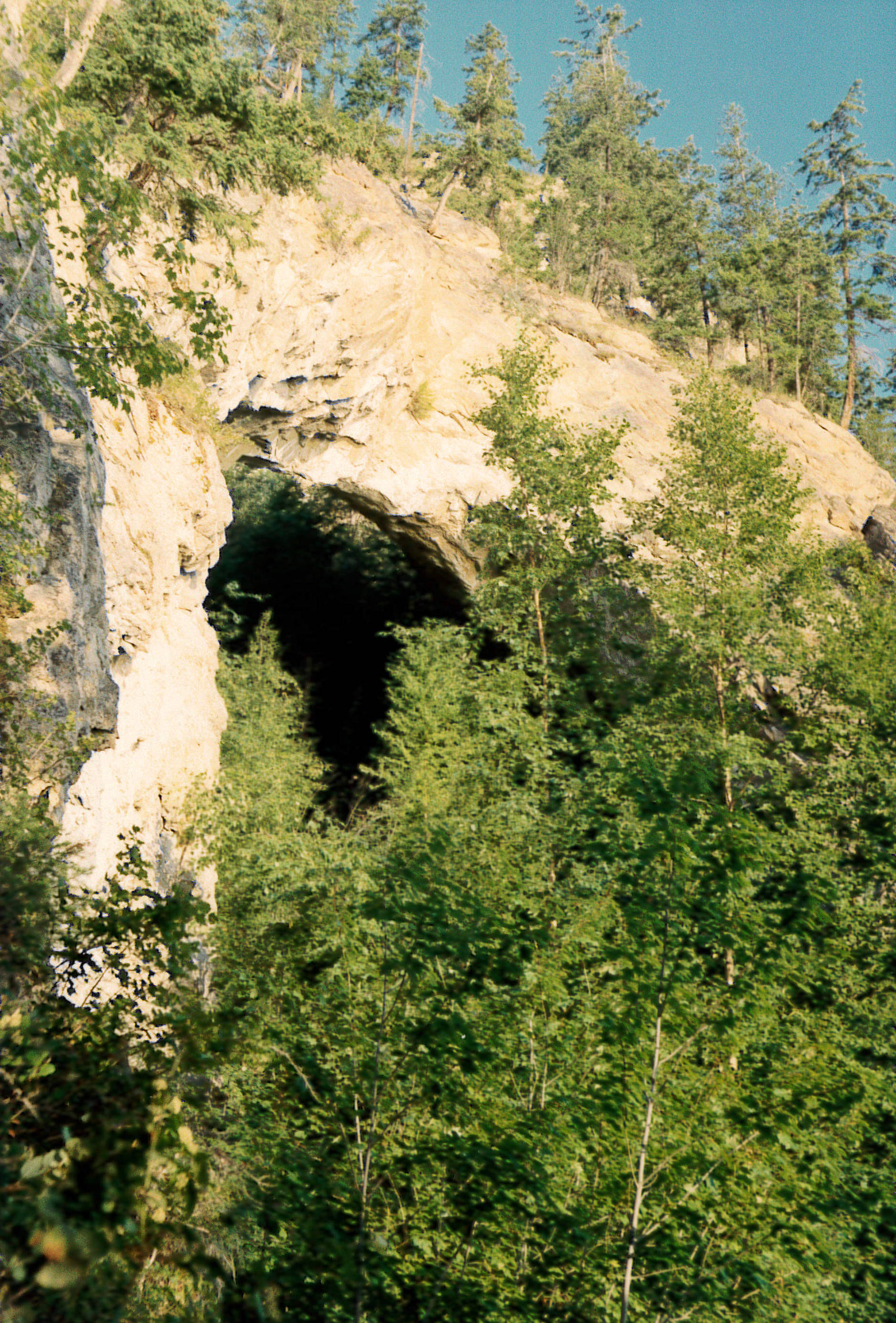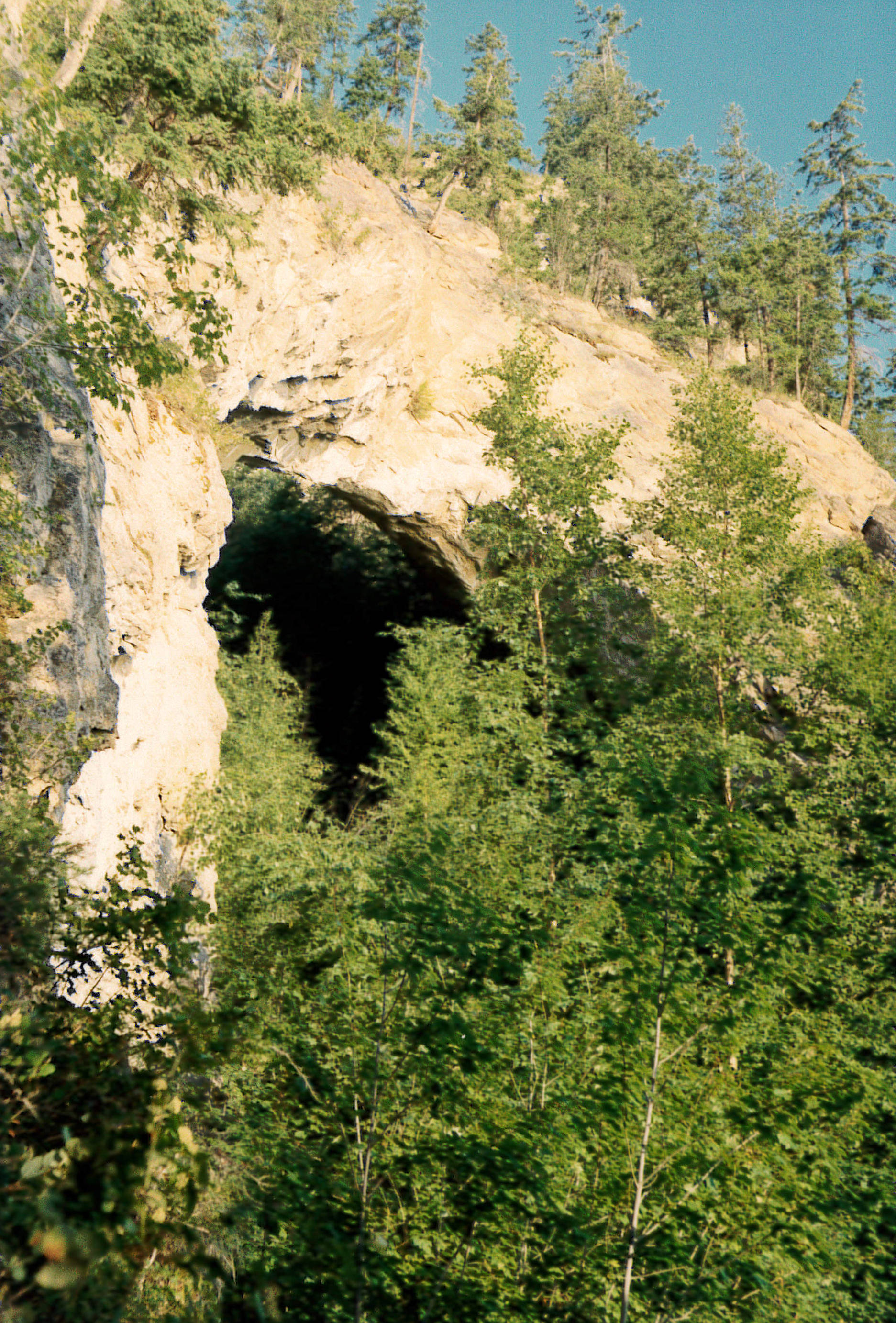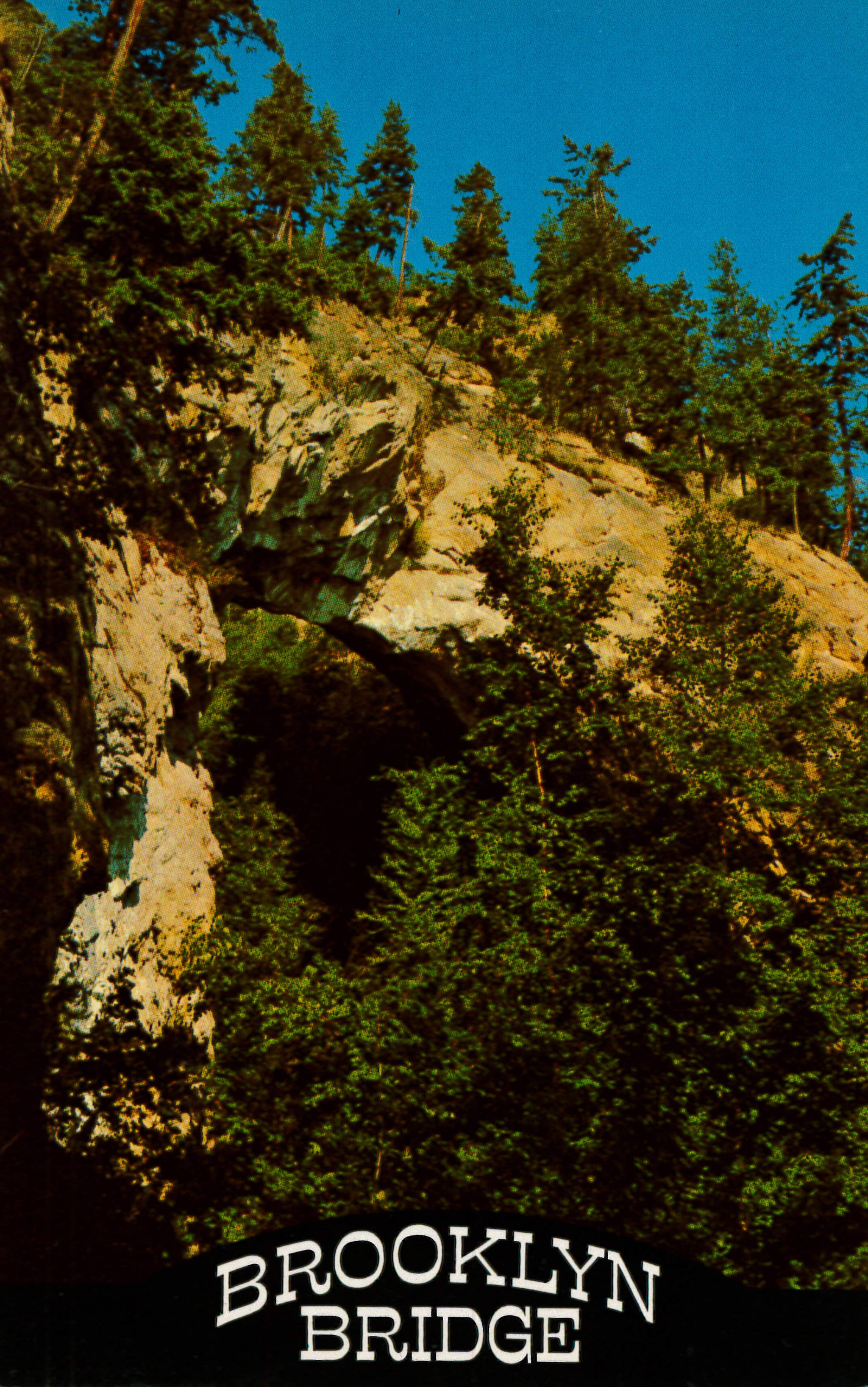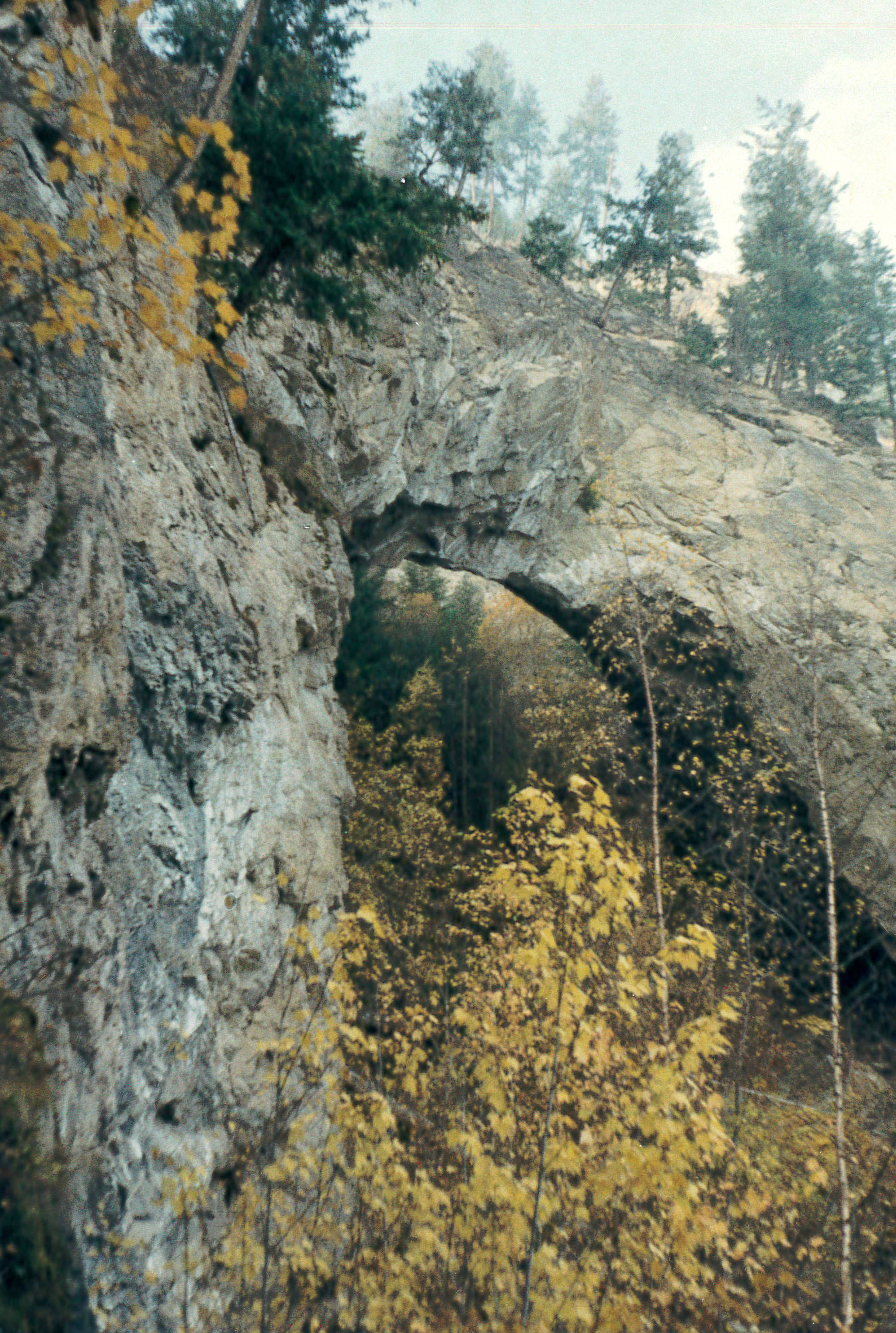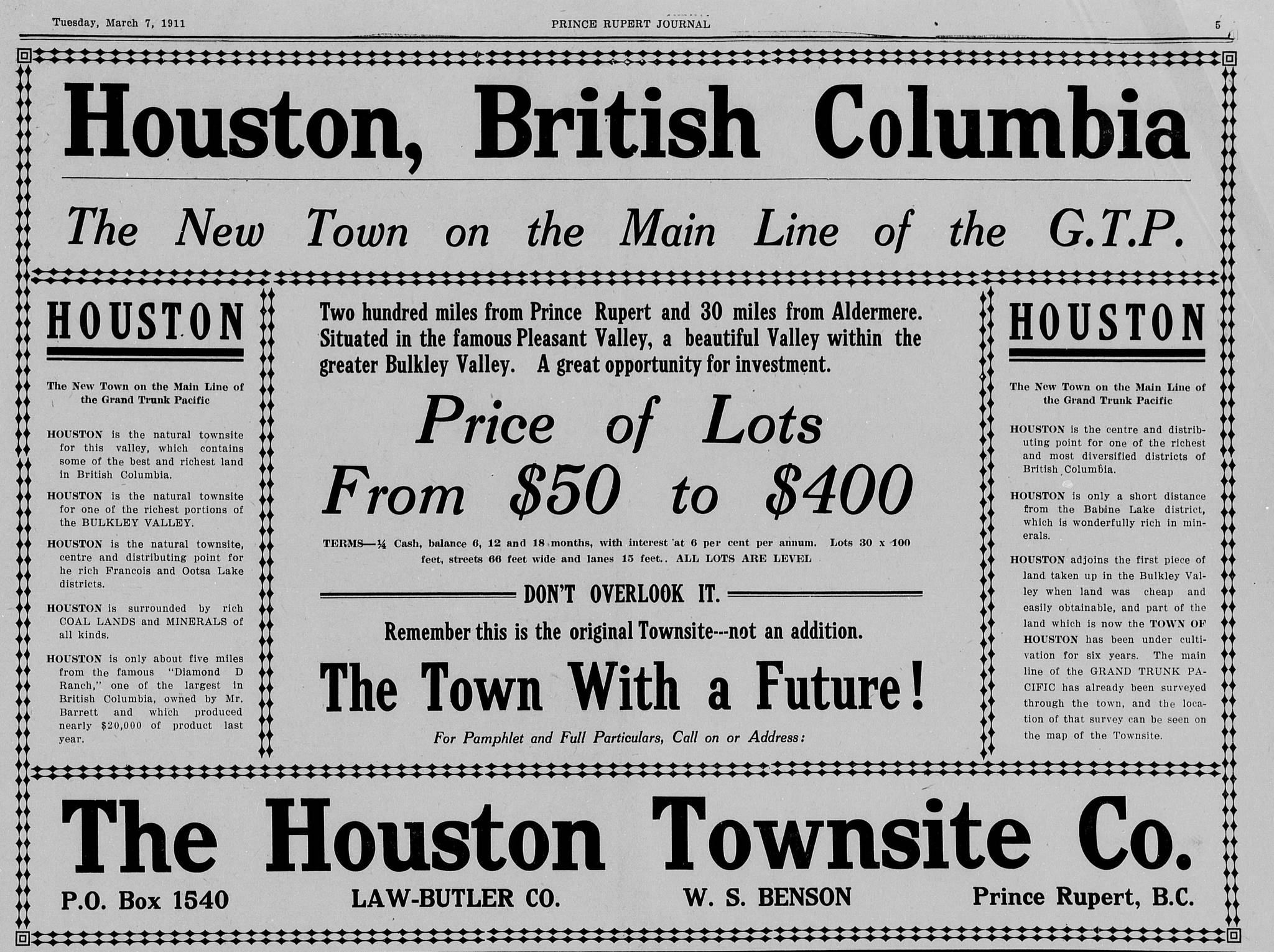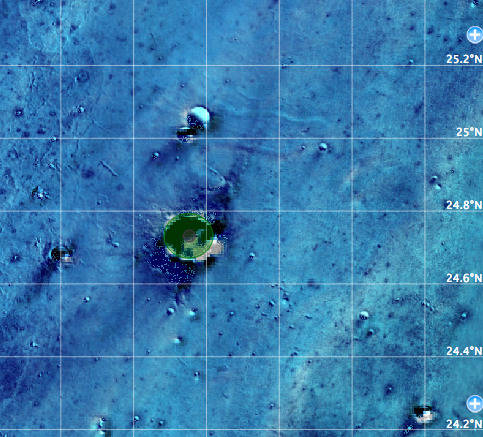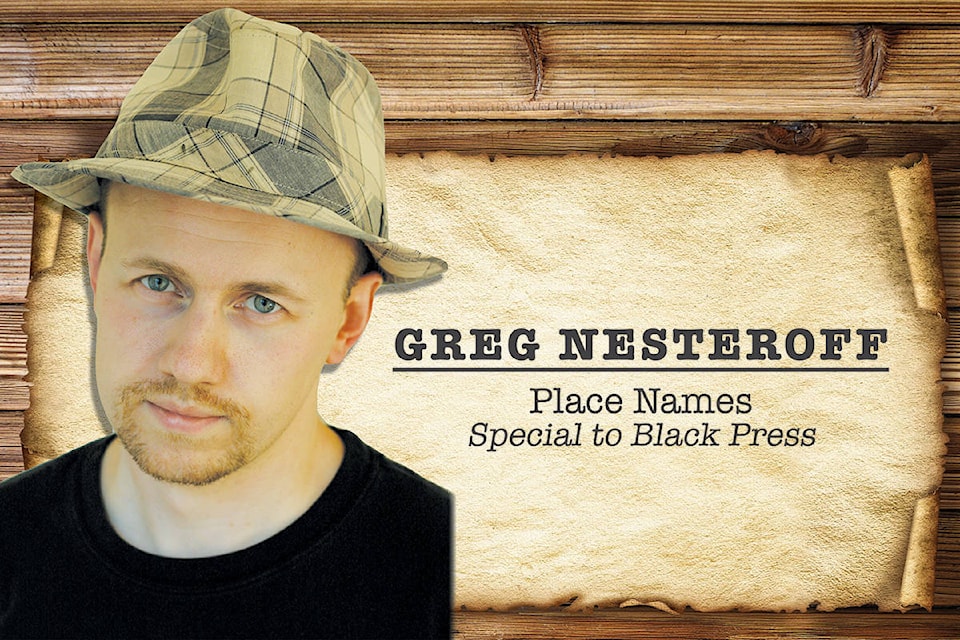Two hundred fifty-eighth in a series on West Kootenay/Boundary place names
A remarkable geographic formation on Bulldog Mountain on the west side of Lower Arrow Lake is the Renata Arch — otherwise known as the Brooklyn Bridge — after a ghost town in the area.
It’s an impressive sight, but due to its remoteness, even today it’s not all that well known. The Castlegar News of July 7, 1949 noted: “Last Sunday the Castlegar and District Board of Trade took advantage of the fine weather to make a long-planned boat trip to Deer Park and Renata. The Great Rock Arch was viewed through field glasses and was a surprise to many who hadn’t heard of its existence.”
Photographer Ellis Anderson might have been the first to call it the Brooklyn Bridge. The earliest known use of the name is on a postcard he produced in the late 1960s or early ‘70s. His caption read: “Brooklyn Bridge (Renata Bridge) is the largest natural rock bridge in Canada — 65 feet high by 140 feet long.”
It’s not the only such arch in the Kootenays: another in the Purcell Wilderness Conservancy, has been dubbed Grizzly Groove by a party that climbed it in 2017. Vince Hempsall, who was among them, writes on the Kootenay Mountain Culture website: “The name is to honour the Ktunaxa nation that refers to this Jumbo-Toby Creek watershed area as Qat’muk, a sacred place where the Grizzly Bear Spirit is born, where it celebrates in ceremonial dances, and where it eventually dies.”
LOCALS WITH NAMES
ELSEWHERE
A few Kootenaians have been honoured with place names elsewhere in BC.
• Gilbert Malcolm Sproat (1834-1913) a prominent West Kootenay figure who, among other things, named Nelson, is honoured in Sproat Lake, west of Port Alberni, the Sproat River and Sproat Narrows in the same area, and Sproat Bay in Barkley Sound.
Sproat’s Landing near Castlegar was named after his elder brother Thomas, but is no longer on the map. Neither is the community of Sproat, on Upper Arrow Lake between Arrowhead and Revelstoke. However, Mount Sproat still towers over the former site of Arrowhead. Gilbert is also remembered in Sproat Drive in Nelson. The townsite of Columbia, on the former Sproat’s Landing townsite, included a Sproat Avenue, but the town never got off the ground.
• Houston, BC, in the Bulkley Valley, is named after John Houston (1850-1910), Nelson’s founding mayor. The name was chosen in a 1910 newspaper contest. An ad in the Vancouver Daily World of July 4, 1911 noted: “The Grand Trunk Pacific has recently located in this section the townsite of Houston, named in honor of that sturdy old pioneer of British Columbia, John Houston.”
There’s also a Houston Street in Nelson.
John Houston did spend time in Texas, but the City of Houston is named after General Sam Houston, president of the Republic of Texas 1836-38 and 1841-44.
• Tuck Inlet, northeast of Prince Rupert, was named after Samuel Parker Tuck (1837-1916), who surveyed the inlet in 1892. He also surveyed the Kaslo townsite and served as its city clerk. Later he was a newspaper editor and sheriff of South Kootenay.
• The town of Hedley is named after Robert Rift Hedley (1863-1940), a mining engineer who was superintendent of the Hall Mines smelter in Nelson from 1897-1907. The townsite named in his honour, and first known as Hedley City, was surveyed in 1900.
• John Dean Park, on southern Vancouver Island, is named for the man who was mayor of Rossland in 1903 and donated the first 32 hectares of the park in 1921. Dean (1850-1943) was a realtor in both Rossland and Victoria.
AKOLKI VS. AKOLKOLEX
We’ve previously remarked on the similarity between Kuskonook (or Kuskanook) on Kootenay Lake and Kuskanax on Upper Arrow Lake. There’s also a resemblance between Akokli Creek (and Akokli Mountain) on Kootenay Lake, near Boswell, and the Akolkolex River, which flows into Upper Arrow Lake below Revelstoke.
Akokli is the Ktunaxa word for horn of an animal. The online Ktunaxa dictionary writes it ʔa·kuqǂi.
Concerning Akokli Creek, the BC Geographical Names website notes that it was adopted in 1937 as labelled on maps of 1902 and 1915. It was labelled Goat (12 Mile) Creek on an 1898 map and Goat Creek on a 1912 map.
The page doesn’t comment on the origin of Akolkolex, but notes it was adopted by the Geographic Board of Canada as labelled on a 1915 map.
NAKUSP ON MARS
Several local places were named after other places around the world. We’ve also exported one local name to another part of the solar system.
Mars boasts a Nakusp crater, which is 7.26 km in diameter. The name was adopted on Sept. 14, 2006. Of the hundreds of thousands of craters on the planet, large ones (more than 60 km in diameter) are named after famous scientists and science fiction authors while smaller ones are named after towns on Earth — as drawn from a name bank. In this case, it was drawn from The Times Atlas of the World (1971).
There are also Martian craters named Hope, Kamloops, Inuvik, Banff, Okotoks, Penticton, among other Canadian names. In all, more than 5,200 craters in the solar system have names.
If you’re planning to visit Nakusp crater, the exact co-ordinates are 24.72°N 35.52°W.
